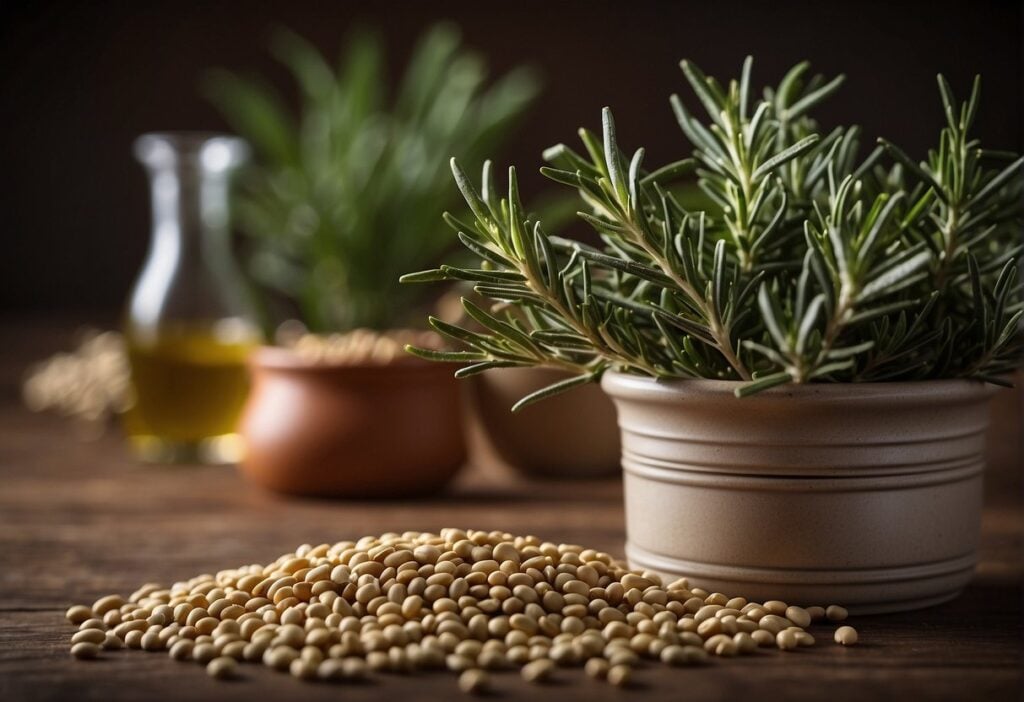A Guide To Using Rosemary & Thyme For Flavor Enhancement

Table of Contents
Understanding the Distinct Flavors of Rosemary & Thyme
Rosemary and thyme, while both members of the mint family, offer distinct and complementary flavor profiles. Understanding these differences is key to maximizing their impact in your cooking.
-
Rosemary: Earthy, piney, slightly bitter, and intensely aromatic, rosemary boasts a strong, almost resinous flavor. Its powerful aroma makes it a standout ingredient. Rosemary pairs beautifully with lamb, roasted vegetables, and the bold flavors of Mediterranean cuisine. Its robust nature can sometimes overpower delicate dishes, so use it judiciously.
-
Thyme: Slightly sweet, earthy, and subtly lemony, thyme offers a more delicate and nuanced flavor compared to rosemary. Its subtle hints of citrus make it a versatile herb that enhances a wide range of dishes without overpowering them. Thyme complements poultry, soups, stews, and tomato-based dishes perfectly.
The key difference lies in their intensity. Rosemary's potent flavor demands careful consideration, while thyme's subtle notes allow for more liberal use. This intensity difference dictates their best culinary applications.
Culinary Applications of Rosemary & Thyme: A Comprehensive Guide
Both rosemary and thyme offer a wealth of culinary possibilities. Let's explore some of their most effective applications:
Rosemary in Action:
-
Roasted Meats: Rosemary's robust flavor complements lamb, chicken, and pork beautifully. Try a classic rosemary-garlic lamb roast, where the rosemary's piney notes infuse the meat with incredible flavor. Simply tuck sprigs of fresh rosemary under the skin of your roast chicken for a fragrant and flavorful result.
-
Vegetables: Rosemary pairs well with roasted root vegetables like potatoes, carrots, and parsnips, adding depth to their earthy flavors. Toss your chopped vegetables with olive oil, fresh or dried rosemary, salt, and pepper before roasting for a simple yet delicious side dish.
-
Bread & Baking: Rosemary’s piney notes add a unique twist to focaccia, breadsticks, and even cookies. Imagine the aromatic burst of rosemary focaccia, perfectly complemented by a drizzle of olive oil and sea salt. Experiment with adding chopped rosemary to your favorite cookie recipe for an unexpected flavor combination.
-
Infused Oils & Vinegars: Infuse olive oil or vinegar with rosemary for a flavorful addition to salads and marinades. Simply add fresh rosemary sprigs to a bottle of good quality olive oil, let it infuse for a few weeks, and enjoy the fragrant, flavorful oil in your salads and dips. Remember to store infused oils and vinegars in a cool, dark place.
Thyme's Versatile Uses:
-
Poultry & Seafood: Thyme's subtle lemony notes complement poultry (chicken, turkey) and seafood dishes, enhancing their delicate flavors. A simple roast chicken with thyme and lemon is a classic for a reason. Add a few sprigs of fresh thyme to your next pan-seared fish for a touch of elegance.
-
Soups & Stews: Thyme adds depth and warmth to soups and stews, creating complex and comforting flavors. Use fresh thyme for a brighter, more vibrant flavor in lighter soups, and dried thyme for a deeper, more earthy note in hearty stews.
-
Tomato-Based Dishes: The subtle sweetness of thyme pairs exceptionally well with tomatoes, enhancing sauces, pasta dishes, and pizzas. Add a pinch of dried thyme to your homemade tomato sauce for a touch of sophistication. Try sprinkling fresh thyme on bruschetta for a fresh, herbaceous element.
-
Herbs de Provence: Thyme is a key ingredient in the classic French herb blend, Herbs de Provence, a versatile mix often used to season roasted vegetables, meats, and more.
Fresh vs. Dried Rosemary & Thyme: Choosing the Right Herb
The choice between fresh and dried rosemary and thyme impacts the flavor intensity of your dishes.
-
Fresh Herbs: Fresh rosemary and thyme offer a more potent, vibrant flavor, best suited for dishes that don't require prolonged cooking. Their flavor can easily be lost with extended cooking times.
-
Dried Herbs: Dried rosemary and thyme are less intense, ideal for longer cooking times such as soups, stews, and braises. They are also convenient for storage and have a longer shelf life.
As a general rule, use approximately one-third the amount of dried herbs compared to fresh herbs when substituting in recipes. Experiment to find the perfect balance that complements your dishes.
Conclusion
Rosemary and thyme offer a world of flavor possibilities, enhancing a wide array of dishes with their unique and complementary profiles. By understanding their distinct characteristics and culinary applications, you can unlock their full potential. Whether you’re using fresh or dried rosemary and thyme, experiment with different combinations and techniques to discover your own signature flavors. Start exploring the wonderful world of rosemary and thyme today and elevate your culinary creations!

Featured Posts
-
 Der Zukuenftige Bodensee Auswirkungen Des Klimawandels In 20 000 Jahren
May 31, 2025
Der Zukuenftige Bodensee Auswirkungen Des Klimawandels In 20 000 Jahren
May 31, 2025 -
 Death Of Muslim Man In France A Catalyst For Far Left Criticism Of Islamophobia
May 31, 2025
Death Of Muslim Man In France A Catalyst For Far Left Criticism Of Islamophobia
May 31, 2025 -
 Saskatchewan Wildfire Season Hotter Summer Fuels Concerns
May 31, 2025
Saskatchewan Wildfire Season Hotter Summer Fuels Concerns
May 31, 2025 -
 Vehicle Rollover Accident On Whalebone Lane South Dagenham
May 31, 2025
Vehicle Rollover Accident On Whalebone Lane South Dagenham
May 31, 2025 -
 Shelton Through To Munich Semis After Darderi Victory
May 31, 2025
Shelton Through To Munich Semis After Darderi Victory
May 31, 2025
